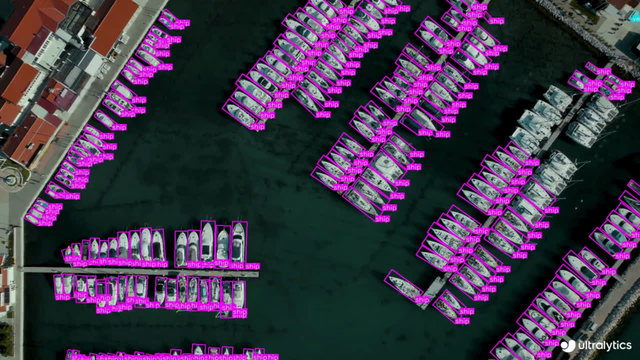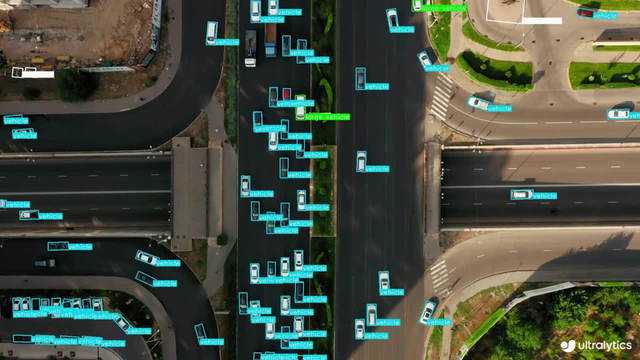Spaces:
Sleeping
Sleeping
File size: 12,763 Bytes
7370e5c |
1 2 3 4 5 6 7 8 9 10 11 12 13 14 15 16 17 18 19 20 21 22 23 24 25 26 27 28 29 30 31 32 33 34 35 36 37 38 39 40 41 42 43 44 45 46 47 48 49 50 51 52 53 54 55 56 57 58 59 60 61 62 63 64 65 66 67 68 69 70 71 72 73 74 75 76 77 78 79 80 81 82 83 84 85 86 87 88 89 90 91 92 93 94 95 96 97 98 99 100 101 102 103 104 105 106 107 108 109 110 111 112 113 114 115 116 117 118 119 120 121 122 123 124 125 126 127 128 129 130 131 132 133 134 135 136 137 138 139 140 141 142 143 144 145 146 147 148 149 150 151 152 153 154 155 156 157 158 159 160 161 162 163 164 165 166 167 168 169 170 171 172 173 174 175 176 177 178 179 180 181 182 183 184 185 186 187 188 189 190 191 192 193 194 195 196 197 198 199 200 201 202 203 204 205 206 207 208 209 210 211 212 213 214 215 216 217 218 219 220 221 222 223 224 225 226 227 228 229 230 231 232 233 234 235 236 237 238 239 240 241 242 243 244 245 246 247 248 249 250 251 252 253 254 255 256 257 258 259 260 261 262 263 264 265 266 267 268 269 270 271 272 273 274 275 276 277 278 279 280 281 282 283 |
---
comments: true
description: Discover how to detect objects with rotation for higher precision using YOLOv8 OBB models. Learn, train, validate, and export OBB models effortlessly.
keywords: Oriented Bounding Boxes, OBB, Object Detection, YOLOv8, Ultralytics, DOTAv1, Model Training, Model Export, AI, Machine Learning
model_name: yolov8n-obb
---
# Oriented Bounding Boxes Object Detection
<!-- obb task poster -->
Oriented object detection goes a step further than object detection and introduce an extra angle to locate objects more accurate in an image.
The output of an oriented object detector is a set of rotated bounding boxes that exactly enclose the objects in the image, along with class labels and confidence scores for each box. Object detection is a good choice when you need to identify objects of interest in a scene, but don't need to know exactly where the object is or its exact shape.
<!-- youtube video link for obb task -->
!!! Tip "Tip"
YOLOv8 OBB models use the `-obb` suffix, i.e. `yolov8n-obb.pt` and are pretrained on [DOTAv1](https://github.com/ultralytics/ultralytics/blob/main/ultralytics/cfg/datasets/DOTAv1.yaml).
<table>
<tr>
<td align="center">
<iframe loading="lazy" width="720" height="405" src="https://www.youtube.com/embed/Z7Z9pHF8wJc"
title="YouTube video player" frameborder="0"
allow="accelerometer; autoplay; clipboard-write; encrypted-media; gyroscope; picture-in-picture; web-share"
allowfullscreen>
</iframe>
<br>
<strong>Watch:</strong> Object Detection using Ultralytics YOLOv8 Oriented Bounding Boxes (YOLOv8-OBB)
</td>
<td align="center">
<iframe loading="lazy" width="720" height="405" src="https://www.youtube.com/embed/uZ7SymQfqKI"
title="YouTube video player" frameborder="0"
allow="accelerometer; autoplay; clipboard-write; encrypted-media; gyroscope; picture-in-picture; web-share"
allowfullscreen>
</iframe>
<br>
<strong>Watch:</strong> Object Detection with YOLOv8-OBB using Ultralytics HUB
</td>
</tr>
</table>
## Visual Samples
| Ships Detection using OBB | Vehicle Detection using OBB |
| :-----------------------------------------------------------------------------------------------------------------------------: | :-------------------------------------------------------------------------------------------------------------------------------: |
|  |  |
## [Models](https://github.com/ultralytics/ultralytics/tree/main/ultralytics/cfg/models/v8)
YOLOv8 pretrained OBB models are shown here, which are pretrained on the [DOTAv1](https://github.com/ultralytics/ultralytics/blob/main/ultralytics/cfg/datasets/DOTAv1.yaml) dataset.
[Models](https://github.com/ultralytics/ultralytics/tree/main/ultralytics/cfg/models) download automatically from the latest Ultralytics [release](https://github.com/ultralytics/assets/releases) on first use.
| Model | size<br><sup>(pixels) | mAP<sup>test<br>50 | Speed<br><sup>CPU ONNX<br>(ms) | Speed<br><sup>A100 TensorRT<br>(ms) | params<br><sup>(M) | FLOPs<br><sup>(B) |
| -------------------------------------------------------------------------------------------- | --------------------- | ------------------ | ------------------------------ | ----------------------------------- | ------------------ | ----------------- |
| [YOLOv8n-obb](https://github.com/ultralytics/assets/releases/download/v8.2.0/yolov8n-obb.pt) | 1024 | 78.0 | 204.77 | 3.57 | 3.1 | 23.3 |
| [YOLOv8s-obb](https://github.com/ultralytics/assets/releases/download/v8.2.0/yolov8s-obb.pt) | 1024 | 79.5 | 424.88 | 4.07 | 11.4 | 76.3 |
| [YOLOv8m-obb](https://github.com/ultralytics/assets/releases/download/v8.2.0/yolov8m-obb.pt) | 1024 | 80.5 | 763.48 | 7.61 | 26.4 | 208.6 |
| [YOLOv8l-obb](https://github.com/ultralytics/assets/releases/download/v8.2.0/yolov8l-obb.pt) | 1024 | 80.7 | 1278.42 | 11.83 | 44.5 | 433.8 |
| [YOLOv8x-obb](https://github.com/ultralytics/assets/releases/download/v8.2.0/yolov8x-obb.pt) | 1024 | 81.36 | 1759.10 | 13.23 | 69.5 | 676.7 |
- **mAP<sup>test</sup>** values are for single-model multiscale on [DOTAv1 test](https://captain-whu.github.io/DOTA/index.html) dataset. <br>Reproduce by `yolo val obb data=DOTAv1.yaml device=0 split=test` and submit merged results to [DOTA evaluation](https://captain-whu.github.io/DOTA/evaluation.html).
- **Speed** averaged over DOTAv1 val images using an [Amazon EC2 P4d](https://aws.amazon.com/ec2/instance-types/p4/) instance. <br>Reproduce by `yolo val obb data=DOTAv1.yaml batch=1 device=0|cpu`
## Train
Train YOLOv8n-obb on the `dota8.yaml` dataset for 100 epochs at image size 640. For a full list of available arguments see the [Configuration](../usage/cfg.md) page.
!!! Example
=== "Python"
```python
from ultralytics import YOLO
# Load a model
model = YOLO("yolov8n-obb.yaml") # build a new model from YAML
model = YOLO("yolov8n-obb.pt") # load a pretrained model (recommended for training)
model = YOLO("yolov8n-obb.yaml").load("yolov8n.pt") # build from YAML and transfer weights
# Train the model
results = model.train(data="dota8.yaml", epochs=100, imgsz=640)
```
=== "CLI"
```bash
# Build a new model from YAML and start training from scratch
yolo obb train data=dota8.yaml model=yolov8n-obb.yaml epochs=100 imgsz=640
# Start training from a pretrained *.pt model
yolo obb train data=dota8.yaml model=yolov8n-obb.pt epochs=100 imgsz=640
# Build a new model from YAML, transfer pretrained weights to it and start training
yolo obb train data=dota8.yaml model=yolov8n-obb.yaml pretrained=yolov8n-obb.pt epochs=100 imgsz=640
```
### Dataset format
OBB dataset format can be found in detail in the [Dataset Guide](../datasets/obb/index.md).
## Val
Validate trained YOLOv8n-obb model accuracy on the DOTA8 dataset. No argument need to passed as the `model`
retains its training `data` and arguments as model attributes.
!!! Example
=== "Python"
```python
from ultralytics import YOLO
# Load a model
model = YOLO("yolov8n-obb.pt") # load an official model
model = YOLO("path/to/best.pt") # load a custom model
# Validate the model
metrics = model.val(data="dota8.yaml") # no arguments needed, dataset and settings remembered
metrics.box.map # map50-95(B)
metrics.box.map50 # map50(B)
metrics.box.map75 # map75(B)
metrics.box.maps # a list contains map50-95(B) of each category
```
=== "CLI"
```bash
yolo obb val model=yolov8n-obb.pt data=dota8.yaml # val official model
yolo obb val model=path/to/best.pt data=path/to/data.yaml # val custom model
```
## Predict
Use a trained YOLOv8n-obb model to run predictions on images.
!!! Example
=== "Python"
```python
from ultralytics import YOLO
# Load a model
model = YOLO("yolov8n-obb.pt") # load an official model
model = YOLO("path/to/best.pt") # load a custom model
# Predict with the model
results = model("https://ultralytics.com/images/bus.jpg") # predict on an image
```
=== "CLI"
```bash
yolo obb predict model=yolov8n-obb.pt source='https://ultralytics.com/images/bus.jpg' # predict with official model
yolo obb predict model=path/to/best.pt source='https://ultralytics.com/images/bus.jpg' # predict with custom model
```
See full `predict` mode details in the [Predict](../modes/predict.md) page.
## Export
Export a YOLOv8n-obb model to a different format like ONNX, CoreML, etc.
!!! Example
=== "Python"
```python
from ultralytics import YOLO
# Load a model
model = YOLO("yolov8n-obb.pt") # load an official model
model = YOLO("path/to/best.pt") # load a custom trained model
# Export the model
model.export(format="onnx")
```
=== "CLI"
```bash
yolo export model=yolov8n-obb.pt format=onnx # export official model
yolo export model=path/to/best.pt format=onnx # export custom trained model
```
Available YOLOv8-obb export formats are in the table below. You can export to any format using the `format` argument, i.e. `format='onnx'` or `format='engine'`. You can predict or validate directly on exported models, i.e. `yolo predict model=yolov8n-obb.onnx`. Usage examples are shown for your model after export completes.
{% include "macros/export-table.md" %}
See full `export` details in the [Export](../modes/export.md) page.
## FAQ
### What are Oriented Bounding Boxes (OBB) and how do they differ from regular bounding boxes?
Oriented Bounding Boxes (OBB) include an additional angle to enhance object localization accuracy in images. Unlike regular bounding boxes, which are axis-aligned rectangles, OBBs can rotate to fit the orientation of the object better. This is particularly useful for applications requiring precise object placement, such as aerial or satellite imagery ([Dataset Guide](../datasets/obb/index.md)).
### How do I train a YOLOv8n-obb model using a custom dataset?
To train a YOLOv8n-obb model with a custom dataset, follow the example below using Python or CLI:
!!! Example
=== "Python"
```python
from ultralytics import YOLO
# Load a pretrained model
model = YOLO("yolov8n-obb.pt")
# Train the model
results = model.train(data="path/to/custom_dataset.yaml", epochs=100, imgsz=640)
```
=== "CLI"
```bash
yolo obb train data=path/to/custom_dataset.yaml model=yolov8n-obb.pt epochs=100 imgsz=640
```
For more training arguments, check the [Configuration](../usage/cfg.md) section.
### What datasets can I use for training YOLOv8-OBB models?
YOLOv8-OBB models are pretrained on datasets like [DOTAv1](https://github.com/ultralytics/ultralytics/blob/main/ultralytics/cfg/datasets/DOTAv1.yaml) but you can use any dataset formatted for OBB. Detailed information on OBB dataset formats can be found in the [Dataset Guide](../datasets/obb/index.md).
### How can I export a YOLOv8-OBB model to ONNX format?
Exporting a YOLOv8-OBB model to ONNX format is straightforward using either Python or CLI:
!!! Example
=== "Python"
```python
from ultralytics import YOLO
# Load a model
model = YOLO("yolov8n-obb.pt")
# Export the model
model.export(format="onnx")
```
=== "CLI"
```bash
yolo export model=yolov8n-obb.pt format=onnx
```
For more export formats and details, refer to the [Export](../modes/export.md) page.
### How do I validate the accuracy of a YOLOv8n-obb model?
To validate a YOLOv8n-obb model, you can use Python or CLI commands as shown below:
!!! Example
=== "Python"
```python
from ultralytics import YOLO
# Load a model
model = YOLO("yolov8n-obb.pt")
# Validate the model
metrics = model.val(data="dota8.yaml")
```
=== "CLI"
```bash
yolo obb val model=yolov8n-obb.pt data=dota8.yaml
```
See full validation details in the [Val](../modes/val.md) section.
|